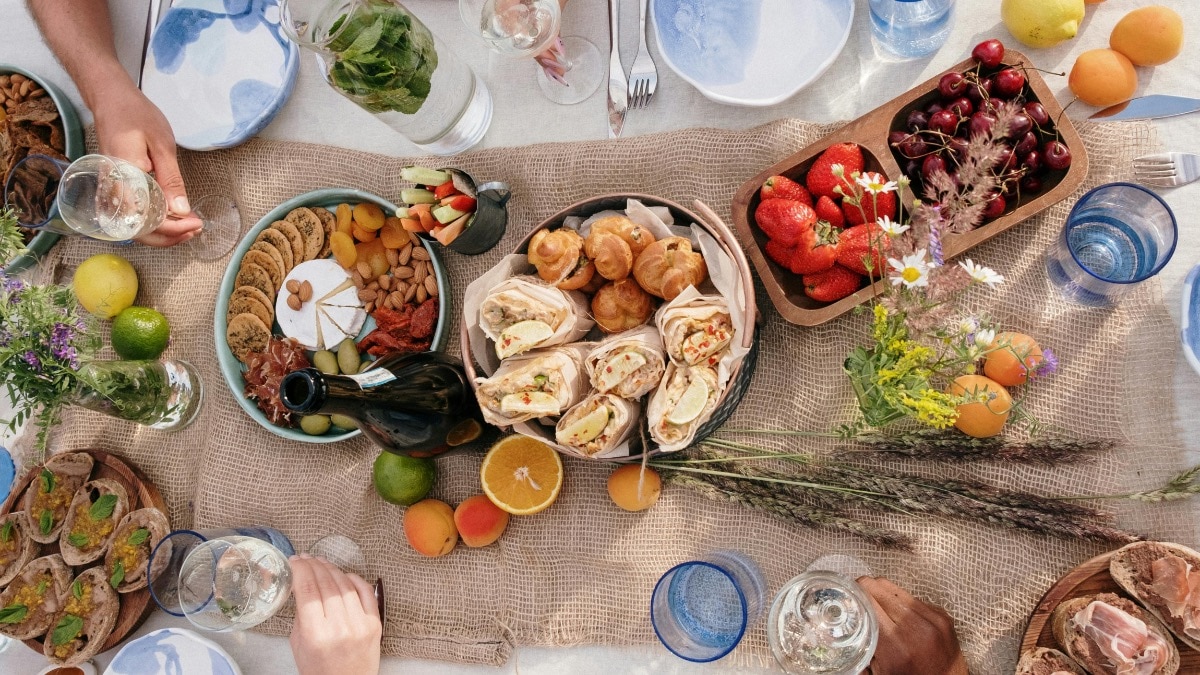
Traditional Indian desserts are going the haute route
Restaurants and sweet shops across India are giving mithai a delicious, contemporary twist.


Few can deny the allure of Indian mithai. After all, it can’t get better than biting into a sunset-yellow block of Mysore pak post an elaborate meal, fishing rotund gulab jamuns from their pool of syrup for an indulgent late-night snack, or enjoying a piping hot imarti with creamy shrikhand on a particularly rainy day.
Which begs the question: Can something that is already perfect be improved?
Chefs across India think so and are proving it—they’re taking traditional Indian desserts and giving them a chic makeover by breaking them down to the sum of their parts, marrying them with global desserts, or employing innovative techniques. The result is nothing short of ingenious, and downright delicious. Think a Mysore pak coffee cheesecake made with chickpea fudge, corn crumble, and a ghee crema. Crispy gulab jamun churros served with an assortment of sauces to dunk into. A unique imarti-waffle creation, topped with mango shrikhand espuma (foam), and strawberry-chilli ice cream.
Inventive desserts are catching the fancy of sweet lovers across India as they scratch the itch to eat something familiar, and yet try something new and creative. But when does fusion go too far, and how does one ensure the sweet spot between innovation and authenticity?
We get to the bottom of what makes hybrids desserts tick, what goes into creating them, and what lies ahead for these modern creations.
How are contemporary Indian desserts created?

The secret to creating a dessert that is similar yet completely new is playing heed to all the different parts of it. According to HOSA Goa’s head chef Suresh DC, it starts with envisioning a dish, thinking creatively and infusing it with the right balance. “In the end, it’s always about how your flavour and textures are balanced,” he says. At HOSA, he takes a chiroti (a flaky, layered pastry popular in Maharashtra and Karnataka) and serves it with almond praline and almond cream, topped with dainty edible flowers and more roasted almond. Chef Sarfaraz Ahmed, head chef at Tresind Mumbai, agrees. Any dessert, be it Indian or not, has a variety of elements at play—from the temperature, texture, mouth feel, to even the cutlery and the crockery. He explains that to get the end product right, every element is essential. That is why you’ll find most desserts you’ll dig into at Tresind built using the same thought process. The ‘textures of milk’ dessert for instance, relies on the varying temperatures of the creamy malai burrata and the Yakult ice cream to deliver a decadent punch.
This is especially important for Indian sweets, as they can be complex in themselves and hide many layers of flavours and textures within a single bite. For Bombay Sweet Shop, the Mumbai-based café and sweet shop known for its imaginative take on mithai that recently opened its second outpost in Bandra, one way of ensuring this is by keeping taste at the forefront. Sameer Seth, founder and CEO at Hunger Inc. Hospitality, the parent group behind Bombay Sweet Shop, elaborates, “For us at Bombay Sweet Shop, the most crucial parameter in the entire reimagination of mithai process or giving Indian sweets a modern makeover is to ensure that the creation tastes delicious! It is the taste that captivates the hearts of the consumer.”
Same same, but different—striking the balance between creativity and authenticity

As with creating all things new, chefs have to walk a fine line between paying homage to the original dessert and cooking up something never-been-done-before. Chef Ahmed says that one shouldn’t lose the soul of the dish in the creation process and chef Suresh DC concurs, explaining that giving due credit to all the flavours involved is key. “All the elements need to sync together to create an absolute winner,” he says.
At Bombay Sweet Shop too, they use what they call the ‘form versus flavour’ philosophy. Seth explains, “It is either the form, or the flavour of a creation that people connect with, and it is this connection or emotion that is our inspiration. So, it’s a simple rule—every mithai or Indian dessert at Bombay Sweet Shop will either remind you of the form of the original, or its flavour.” It’s true for their new outpost in Bandra too, where dishes like malai bread, a childhood favourite, is turned into a version that has house-made pao ice cream slathered generously over a thick slice of buttered white bread, and is topped with caramelised milk powder. Or their mithai offerings like kaju marzipan bon bon that is a chocolate-y take on a classic kaju katli.
When does fusion go too far?

In a country where a new, controversial street food creation is born every other day, turns out fusion is not always a good thing. In a world of Nutella dosas, and chocolate Maggi, it’s paramount to not go overboard. Especially when traditional Indian desserts are as beloved as they are, and come with generations of history, heritage and memories attached to them. Seth says that it is important to respect the roots of these timeless treats. “Going too far with innovation could include overcomplicating flavours and textures, compromising on the taste, and making it merely gimmicky or trendy. By thoughtfully integrating modern influences and celebrating the essence of Indian mithai, we can create a contemporary adaptation that captivates a broader audience while still preserving the soul of these cherished sweet delicacies,” he explains.
Chef Suresh DC agrees that overcomplicating is not the way. “The trick is to keep it simple and not complicate the traditional recipes,” he says. He also points out that flavours should be combined keeping in mind how well they complement each other— if extreme elements are brought together, it could spell disaster.
The future of modern Indian desserts is ripe with innovation, flavour, and potential
The bringing together of traditional sweets with modern flavours and techniques is not a passing trend, and is here to stay, and grow. Chef Ahmed says that pastry chefs nowadays are not afraid of innovation, so the future is bright for modern Indian desserts. Chef Suresh DC adds, “they definitely have a lot of potential...we will see an increase in Indian-inspired desserts.” Seth too has seen a resurgence of Indian sweets, and a renewed interest for mithai. “The exciting part is that this generation too will have their own versions of sweet makers and mithaiwalas who will become a part of their tradition for the decades to come,” he signs off.










